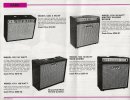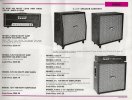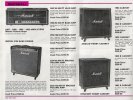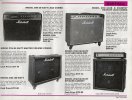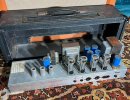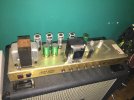Need to spend more time with it, but it’s pretty cool. Definitely its own thing, quite different to a 2203, albeit maybe trying to achieve a similar result (Marshall spent a good chunk of time from the late 70’s onwards trying to perfect footswitchable 2 channel amps with a master volume and reverb). Theres some schematics online although some values are hard to read and i’m not sure how accurate it is. I’m sure Marshall will have a more modern schematic in their servicing department. Planning on taking it in for a once over, they’re local and cheap+quick, and especially great with the oddball amps.Another "Oh my!" I am totally intrigued, and haven't found time to hunt down a schematic to see what one of those might be capable of. We need to know this as well @MirrorProfiles.
What’s odd to me is it’s very much like a cascaded gain version of the 2150 circuit with some value tweaks. But the 1210 appears to be made with the old ST1 board but the 2150 was a smaller board where pots were mounted to it. 2150 chassis had the PI tube between the power amp valves, whereas the 1210 is more like a 2203 chassis

